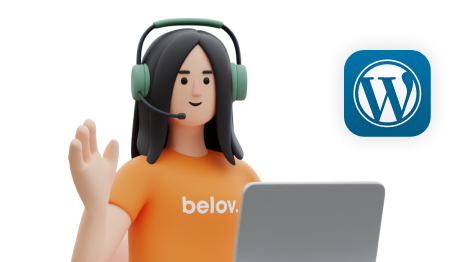
The Evolution of User Interaction: Embracing Voice UI in Web Design
In the ever-evolving landscape of web design, one of the most significant trends shaping the future of user interaction is the integration of voice user interfaces (VUIs). As technology advances, the way users interact with websites and applications is undergoing a profound transformation. Here, we delve into the world of voice UI, its benefits, challenges, and how it is redefining web design.
Understanding Voice User Interfaces
A voice user interface is a technology based on the principles of speech recognition, allowing users to interact with devices through natural language commands. This technology is not just about adding a new layer of features but about creating a seamless and intuitive user experience. As explained by Ramotion, the core components of VUI design include speech recognition, natural language processing, speech synthesis, and feedback.
Benefits of Voice UI in Web Design
Enhanced Accessibility
Voice UIs offer a significant advantage in terms of accessibility. For users with disabilities, such as visual or motor impairments, voice interactions provide an alternative input method, enabling them to interact with technology independently. This is particularly highlighted in the context of smart home devices and virtual assistants like Amazon Alexa and Google Home, which have become integral to daily life.
Increased Efficiency
Voice commands can automate tasks and reduce the time spent on manual interactions. For instance, users can send text messages, control smart appliances, and navigate through websites more conveniently using voice commands. This efficiency is a key driver for the adoption of VUIs in various industries, including automotive and healthcare.
Natural Interactions
Speaking is a natural form of communication, which reduces the learning curve and makes adapting to new technologies easier. Voice interactions allow users to engage with technology in a more human-like way, making the experience more intuitive and user-friendly.
Challenges in Designing Voice UIs
Understanding Context
One of the primary challenges in VUI design is understanding the context and intent behind user commands. Human language is complex and full of nuances, making it difficult for systems to fully respond to various contexts. UX designers must devise effective solutions to interpret user intent accurately.
Privacy Concerns
Voice interactions raise significant privacy concerns due to the collection of user-sensitive data. Ensuring the protection of this data is crucial, and measures such as encryption, biometric authentication, and data anonymization are becoming essential. For example, companies like Kinsta, which offer secure hosting solutions, emphasize the importance of data security in their services.
User Frustrations
Misinterpretation of user speech can lead to frustration. Designers must ensure that error messages are informative and helpful, guiding users toward resolution and maintaining a positive user experience. Clear and consistent feedback is paramount to ensure the user’s understanding of the system’s response and actions.
Designing Effective Voice User Interfaces
User-Centered Design
To create intuitive and efficient voice interactions, thorough user research is essential. Designers need to understand user goals, behaviors, and pain points through detailed user personas and journey maps. This approach helps in empathizing with the target audience and identifying opportunities for improvement.
Clear and Concise Prompts
Guiding the user through the conversation with clear and concise prompts is critical. This minimizes confusion and ensures a smooth user experience. For example, the use of natural language understanding and context awareness enables the system to adapt to user needs and provide more personalized responses.
Feedback and Error Handling
Informative and helpful error messages are vital in maintaining a positive user experience. Users should be updated regularly about the system’s status, progress, and outcomes. This consistent feedback ensures that users understand the system’s responses and actions.
Real-World Examples and Case Studies
Smart Home Devices
Voice UI has revolutionized the smart home industry, allowing users to control lights, thermostats, and appliances through spoken commands. For instance, Amazon Alexa and Google Home have become household names, integrating voice control into daily routines.
Automotive Sector
In the automotive sector, voice UI is used for voice navigation, entertainment, and vehicle controls, improving safety and driver focus. This integration enhances the driving experience by allowing drivers to control functions without taking their hands off the steering wheel.
Healthcare
The healthcare sector is also leveraging voice UI for patient data management, medical record access, and remote patient monitoring. This streamlines workflows and improves patient care, making healthcare services more accessible and efficient.
Emerging Trends in Voice UI
Integration with Emerging Technologies
The integration of voice UI with other emerging technologies like augmented reality (AR) and virtual reality (VR) is a significant trend. This confluence results in immersive experiences where users can interact with digital environments using voice commands. For example, VR gaming is an interesting application area where VUI helps players control their characters and interact with virtual objects using voice commands.
Advanced AI and ML
Voice assistant UI is becoming smarter, capable of understanding complex queries, performing multiple tasks simultaneously, and adapting to individual user preferences. Fueled by the integration of large language models, the technology is moving towards more natural and human-like interactions.
Measuring the Success of Voice UI
Evaluating the success of a voice UI requires a comprehensive approach. Key performance indicators (KPIs) such as task success rate, time on task, and error rates can be used to assess system performance. User satisfaction metrics, including net promoter score (NPS) and customer satisfaction (CSAT) scores, provide sharp insights into user perceptions. Qualitative feedback through user interviews and usability testing are equally invaluable for identifying areas for improvement.
Conclusion and Next Steps
Voice user interfaces represent a paradigm shift in human-computer interaction, offering a more natural and intuitive way to engage with technology. As web designers, it is crucial to stay ahead of the curve by incorporating VUIs into web design strategies.
For those looking to integrate voice UI into their web projects, Belov Digital Agency offers expert services in UX design and web development. Our team is well-versed in the latest trends and technologies, including voice UI, to create seamless and intuitive user experiences.
If you are considering enhancing your website with voice UI capabilities, Contact Us to discuss how we can help you leverage this technology to improve user interaction and accessibility.
In the future, we can expect voice UI to become even more pervasive, transforming how we interact with technology in our daily lives. By focusing on user-centered design, clear feedback, and advanced AI and ML integration, we can create voice UIs that are not only efficient but also highly accessible and user-friendly.
Additional Resources
- Kinsta Hosting: For secure and efficient hosting solutions that support advanced web technologies, consider Kinsta.
- UX Design Principles: For more insights into UX design principles, check out our blog post on UX Design Principles.
- Voice UI Trends: Stay updated with the latest trends in voice UI by reading articles from reputable sources like Ramotion and UXmatters.













